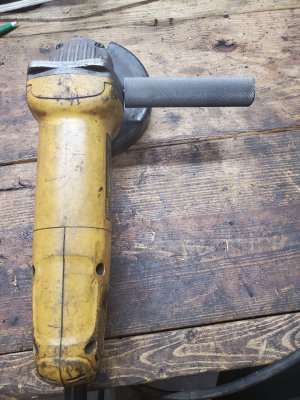- Joined
- Apr 14, 2014
- Messages
- 3,531
According to Starrett their edge finders are accurate to within .0002" and repeatable when used in a collet. It's hard to justify spending $500.00 for an instrument that is only accurate to .0004". In both cases I think it's overkill for anything but a jig bore machine or surface grinder. I doubt my Bridgeport or any other machine in the shop other than the surface grinder is capable of holding tolerances tighter than a $25.00 Starrett edge finder would show.
I always run mine at about 500 rpm and touch off at least twice to verify a true edge. If the edge is free of burrs and contaminants all attempts are within .0002" on the DRO.
I always run mine at about 500 rpm and touch off at least twice to verify a true edge. If the edge is free of burrs and contaminants all attempts are within .0002" on the DRO.






